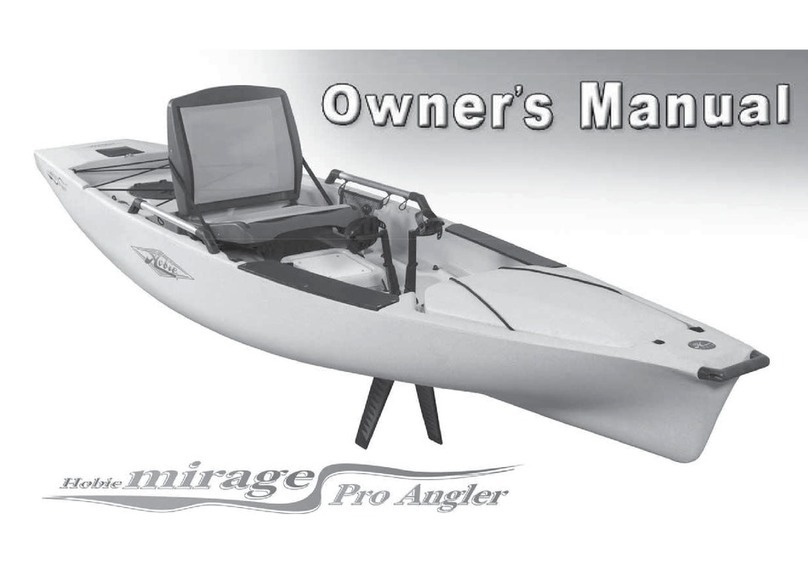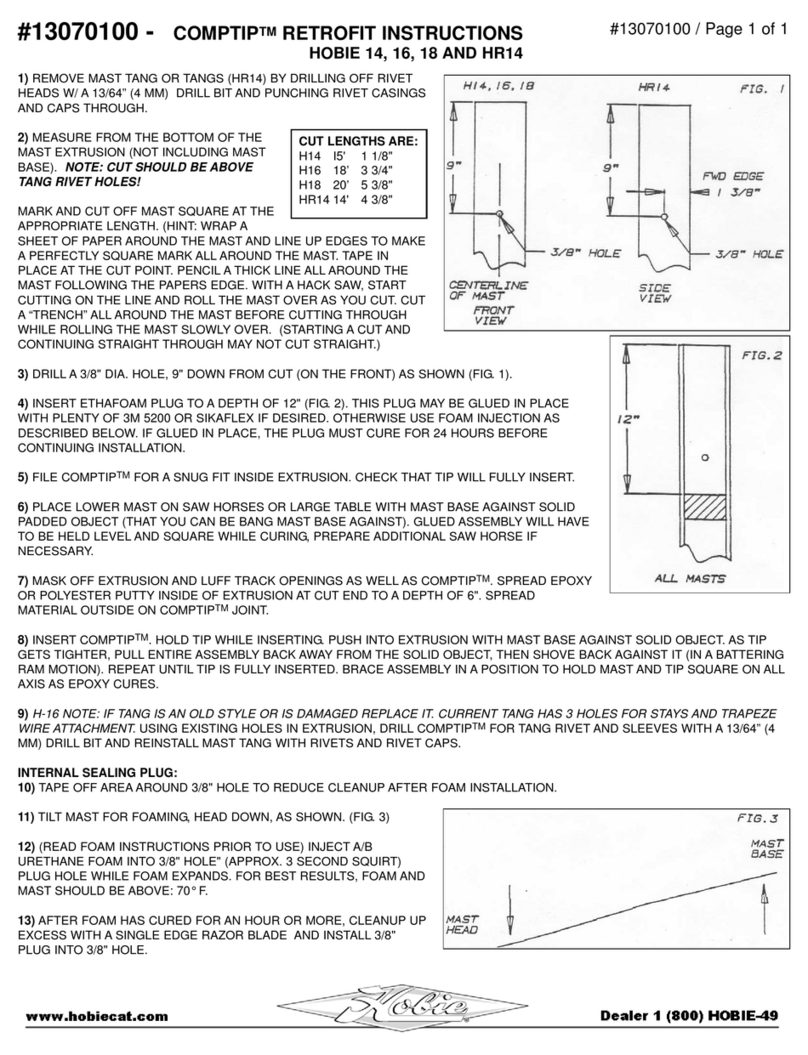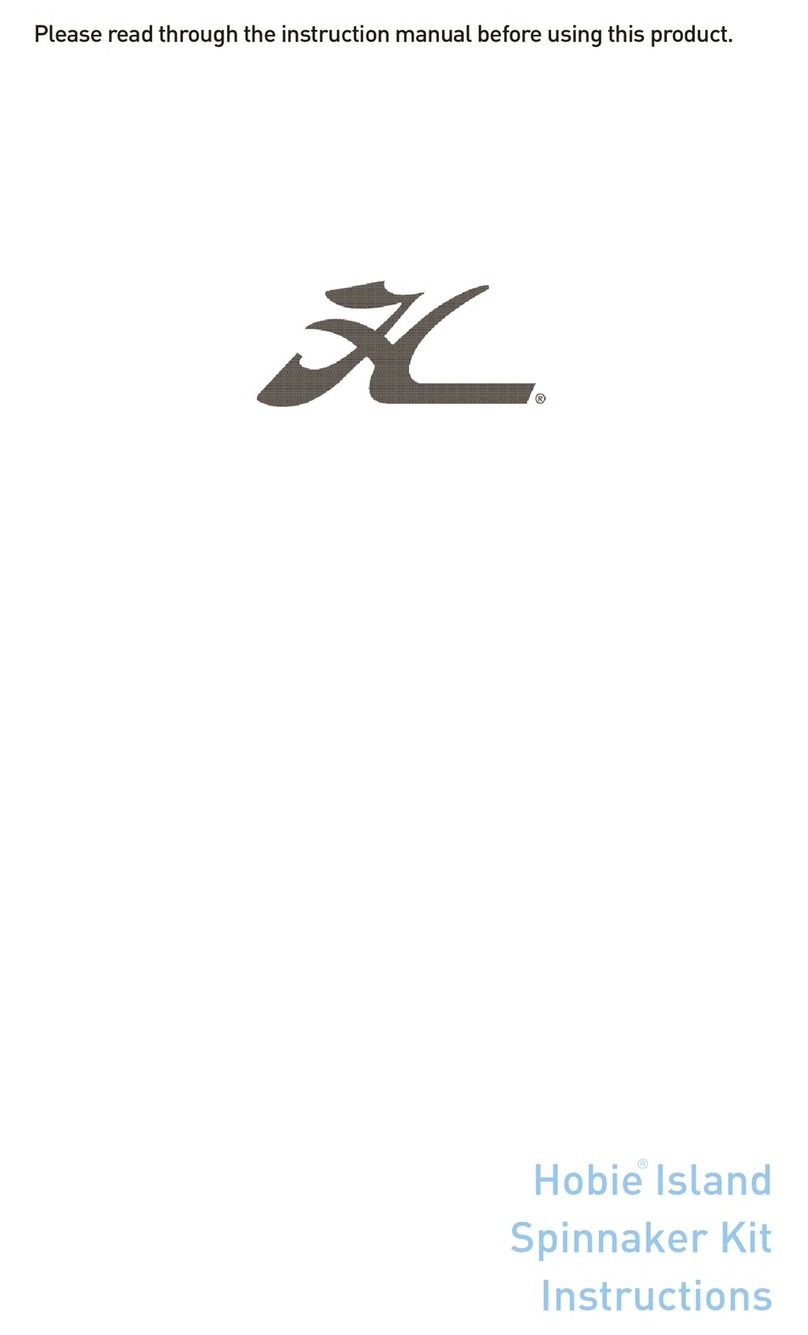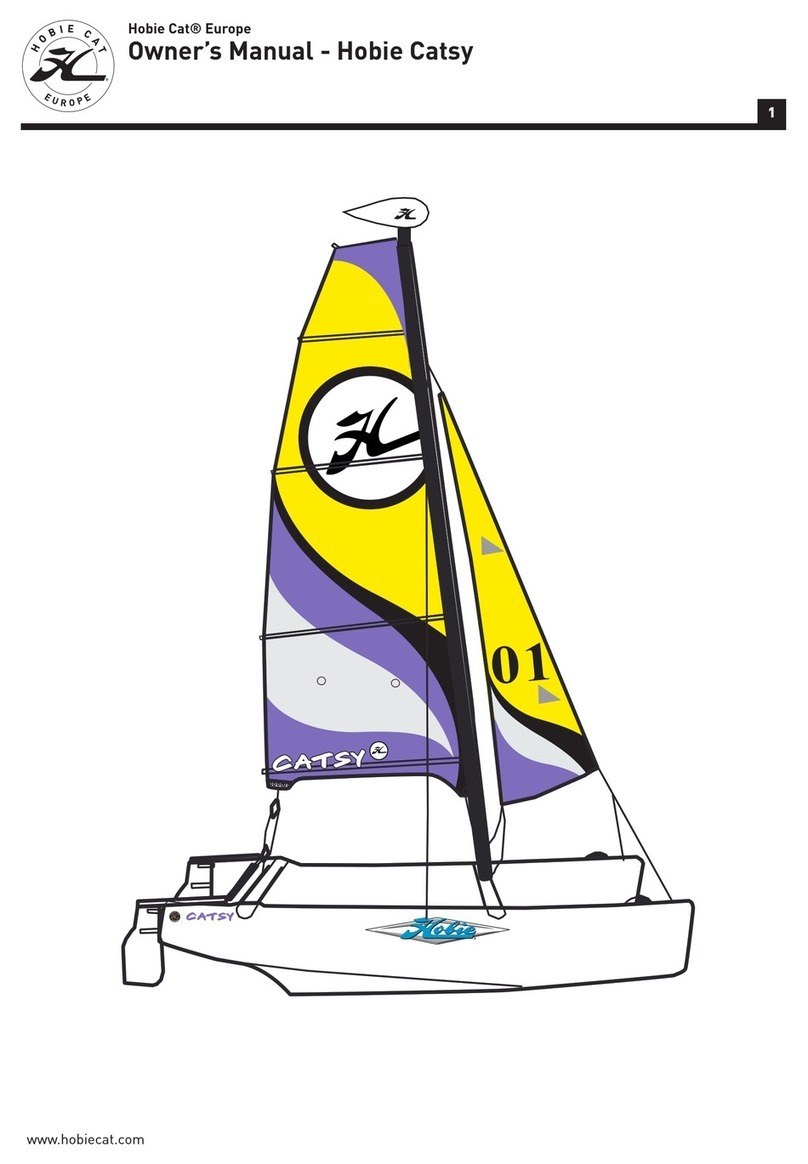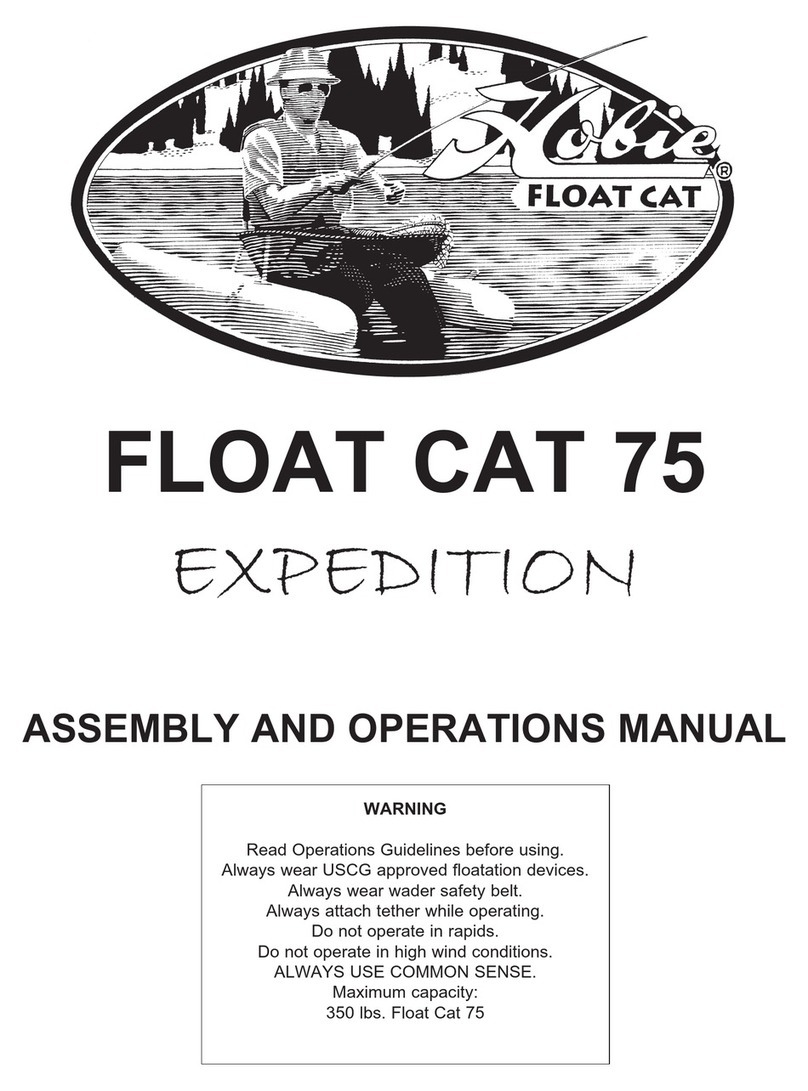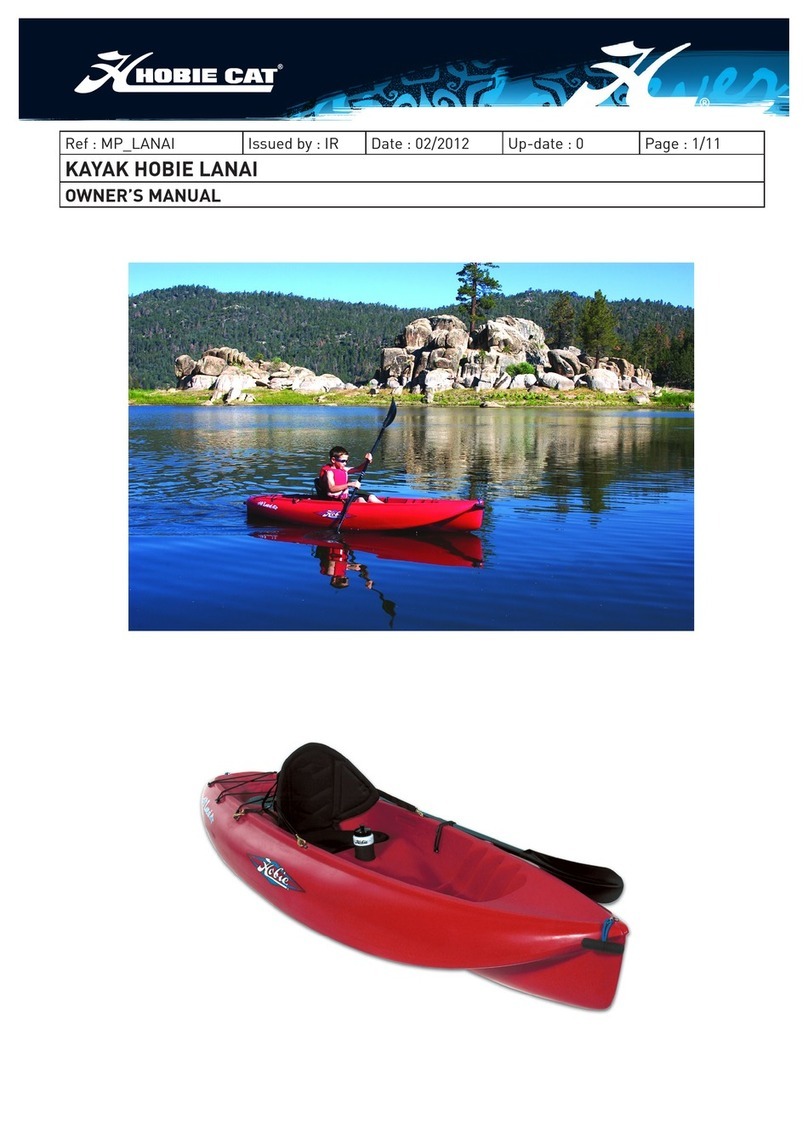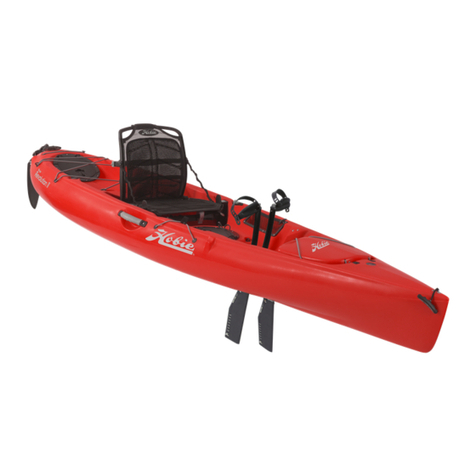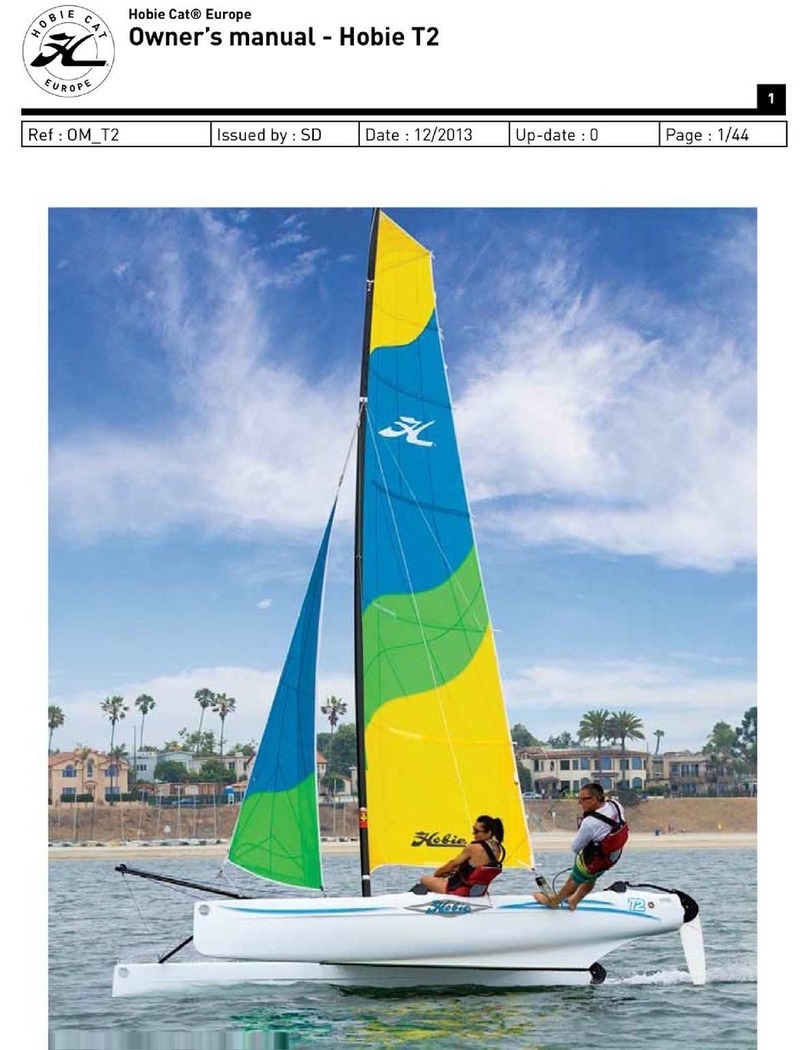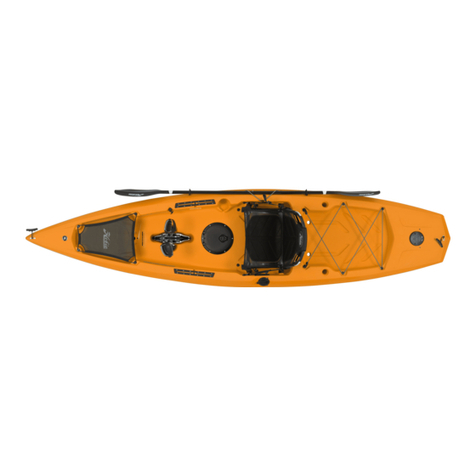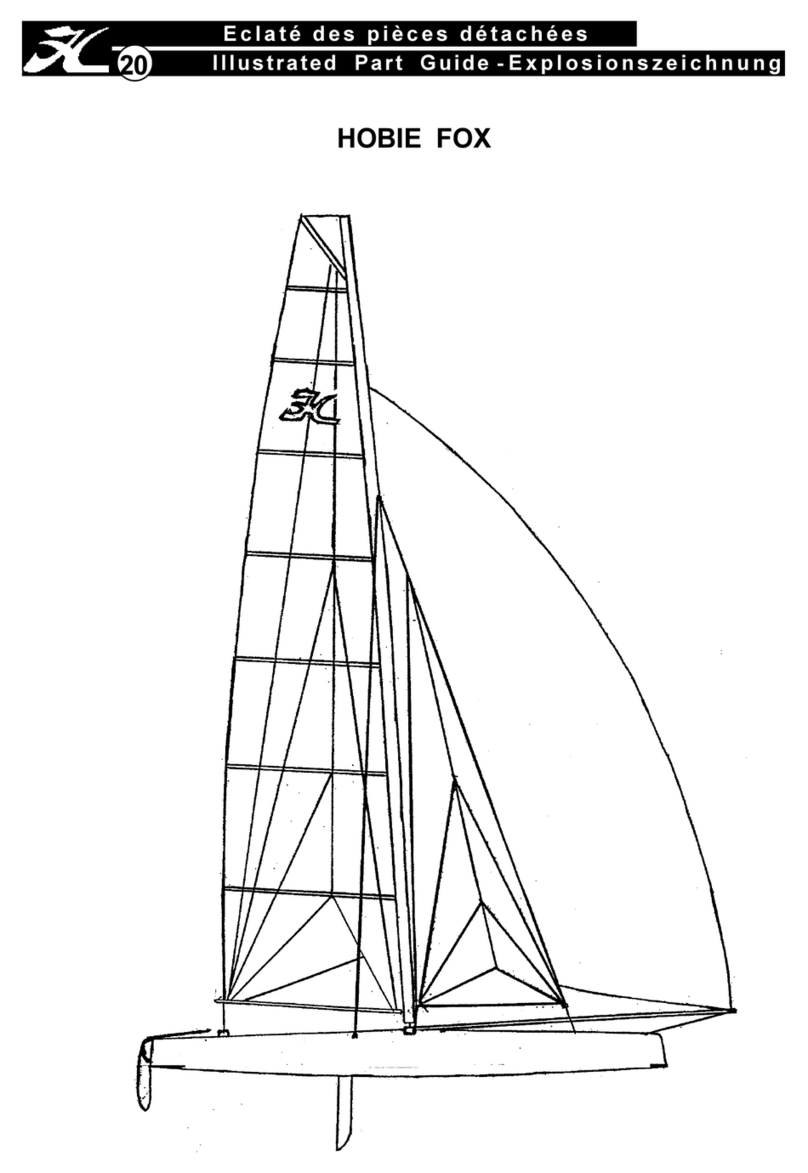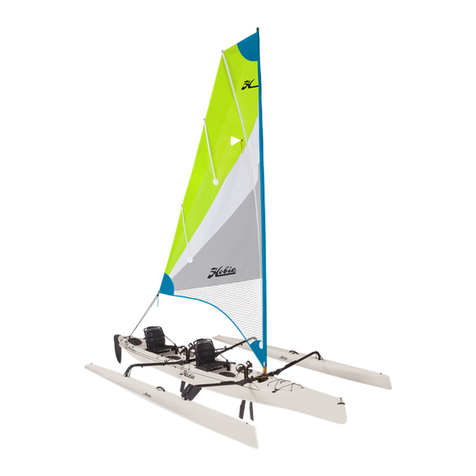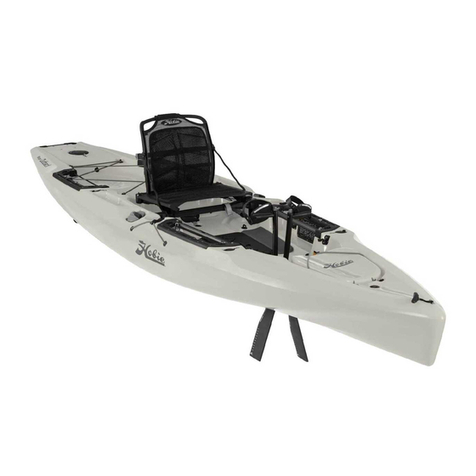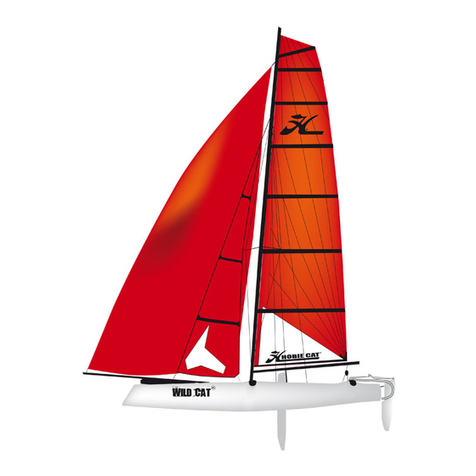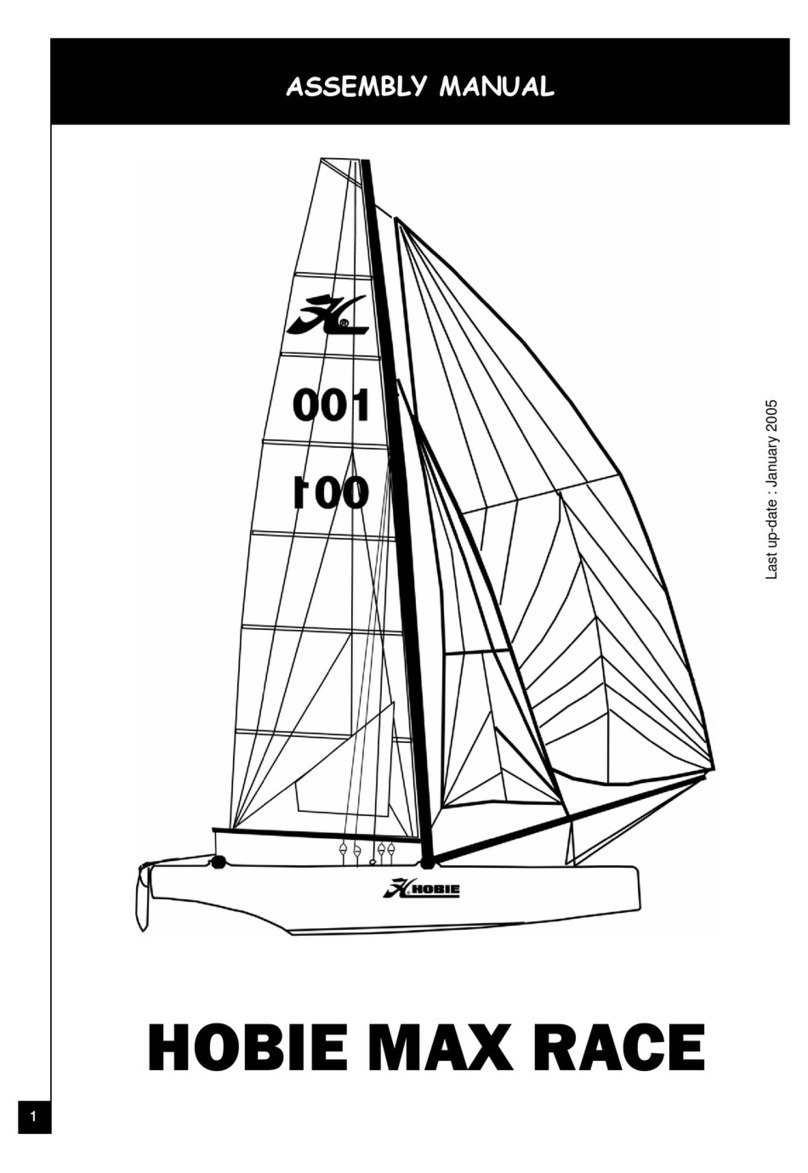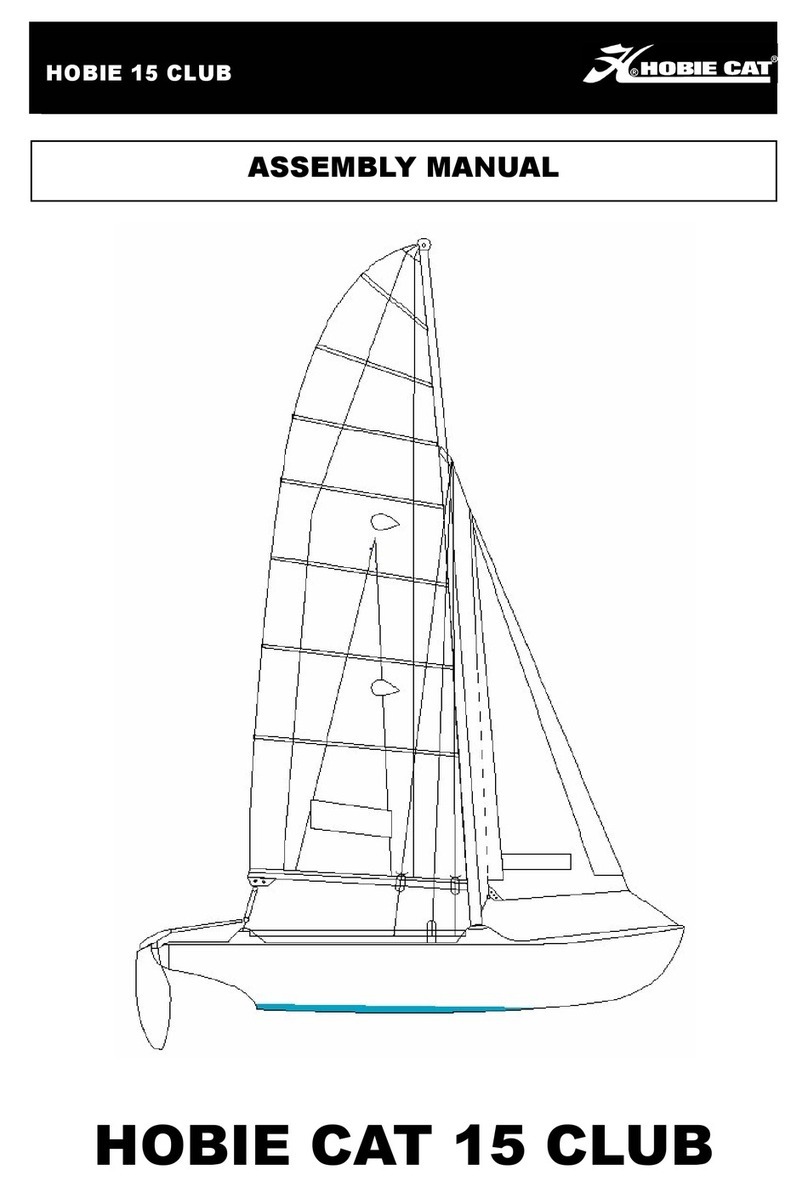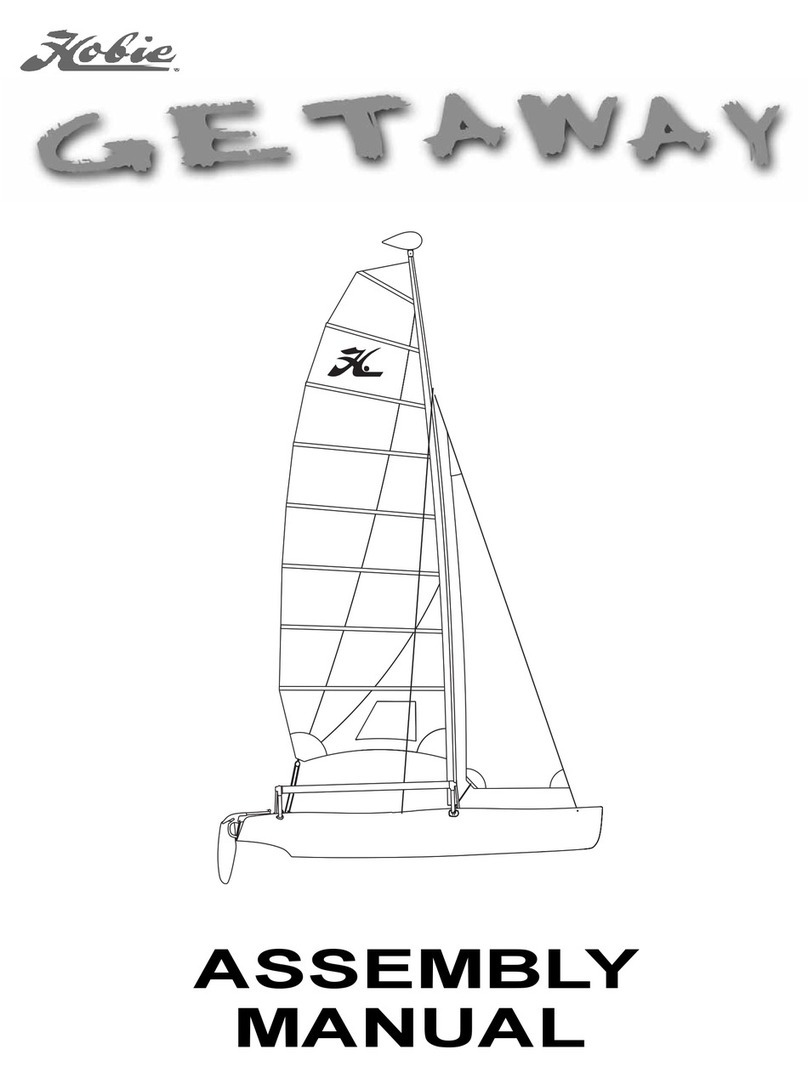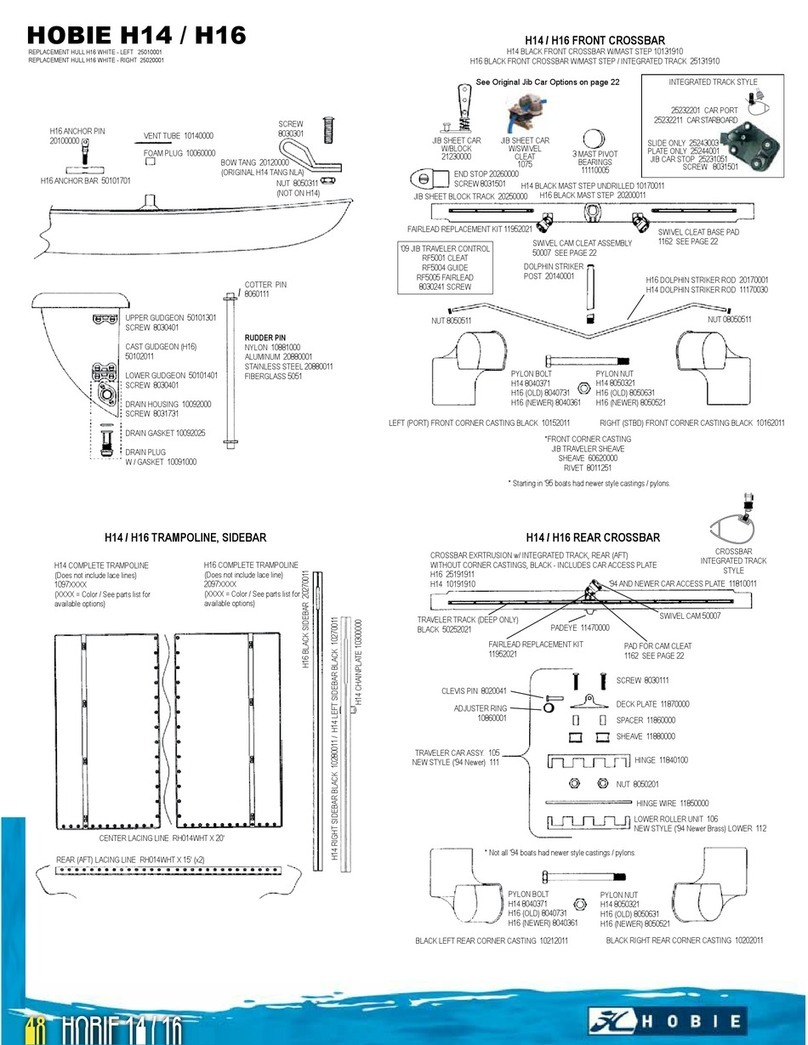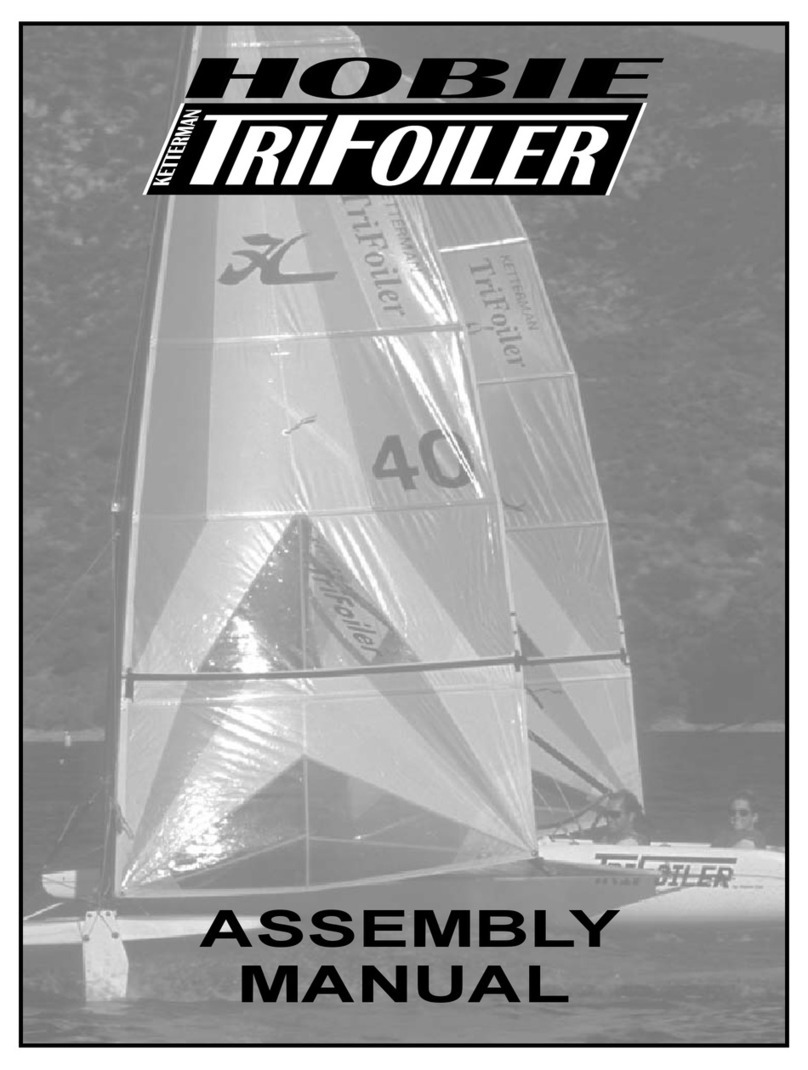2b. Club Wave Crossbar and
Trampoline Assembly
The CLUB WAVE incorporates a HOBIE standard three-
piece trampoline assembly with lace lines in the center
of the rear trampoline, as shown on the following page.
Insert the left and right main sections into the forward
crossbar (grommets toward the center and rear of the
boat) and the rear lacing strip into the rear crossbar.
Lift the front crossbar and insert the left end into the left
hull. Pick up the rear crossbar and insert the left end
into the left hull. The crossbars have stops built into the
underside that will limit the depth that the crossbar can
be inserted.
Reach up and hold the right end of the front crossbar,
and pull it down. This will rotate the left hull to the
upright position. Straddle the right hull and rotate it to
the upright position by grabbing the crossbar insert hole
on the outboard side and pulling it horizontal to the
ground. Insert the front crossbar partially. Align and
insert the rear crossbar partially. Working front and rear,
wiggle hull onto crossbars until fully inserted.
Once the crossbars are completely inserted, slide the
tramp halves in the front crossbar into the hull/tramp
tracks on each hull. Use of soap or spray silicone to
lube the track can help if it is difficult to slide in.
Three lace lines are provided (see picture on the next
page for the lacing diagram). The longer lace line (17’)
will be tied to the forward end of the center lace grom-
mets with a bowline knot. Lace the line through all of
the center grommets to the rear of the trampoline as
shown (by number) in the illustration. Lace the rear of
the tramp starting from the outboard ends toward the
center. Tension all lace lines and tie off with half hitches
at the rear/center of the trampoline.
To tension the trampoline, you will use the mainsheet
system (block and tackle). Find the mainsheet system
located with the small parts and run the line through the
blocks if you haven’t already done it. Attach the shackle
at the bottom of the blocks to the stainless steel loop fit-
ting in the center of the rear crossbar. Pull the main-
sheet hook at the top of
the system, up to the
front of the trampoline.
Hook the mainsheet to
the ring fastened to the
trampoline cable system
at front of trampoline as
seen here. (Do not fasten the mainsheet hook to the
"D" ring that is attached to the trampoline.) Start on
either left or right side.
Pull tension on the mainsheet until the cable system ring
and hook near the "D"
ring attached to the
position hook to engage
ring, thereby connecting
the two rings together as
in the figure below.
Release the mainsheet tension and unhook from ring.
Repeat the process on the opposite side. Be sure all "D"
rings are positioned as shown and not turned or pulled
from ends, as damage to
the trampoline may
result.
Additional tension or
reduced tension can be
achieved by repositioning
the knot as shown in the
image below at rear end of cable (after disengaging the
forward rings). The cables should be tight to make the
trampoline area taut. Unhook rings at front, move knot
and re-hook forward rings. Repeat until trampoline area is
taut. In future assembly this adjustment will not be neces-
sary unless trampoline becomes loose once again.
Adjust knot here
Tighten each Velcro strap (4) to support the trampoline at
the rear crossbar.
The assembly instructions below are for the Hobie
Club Wave crossbar and trampoline. Skip ahead to
page 8, Mast Assembly, if you own a Classic Wave.
7

